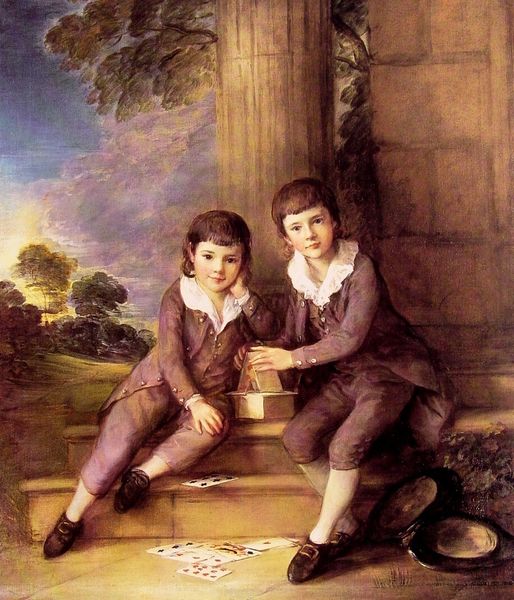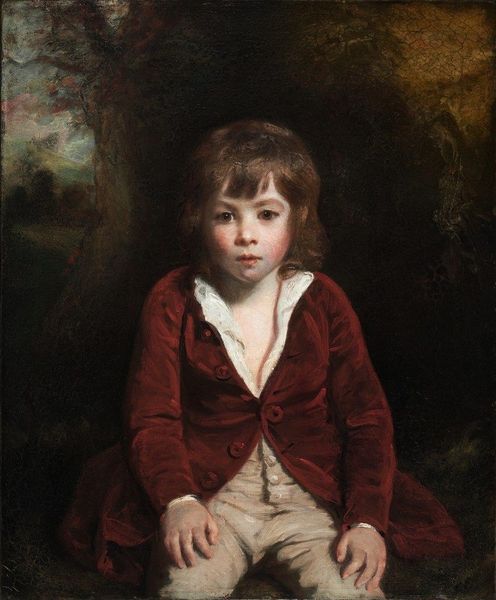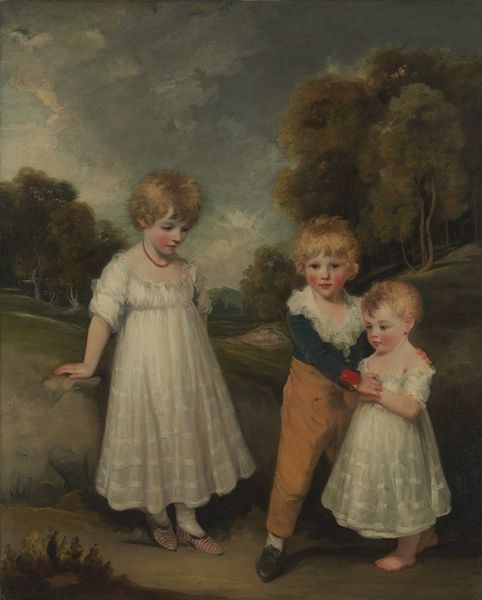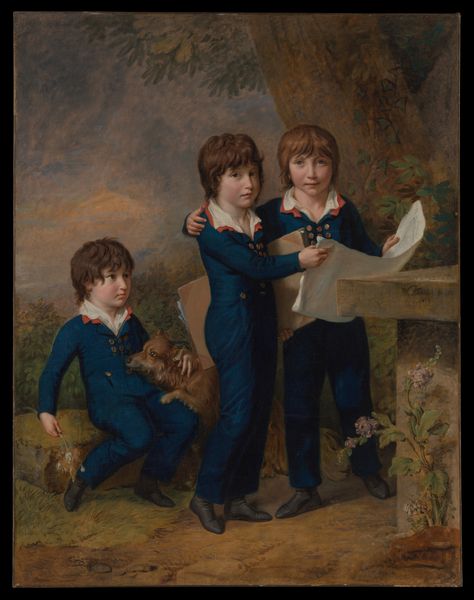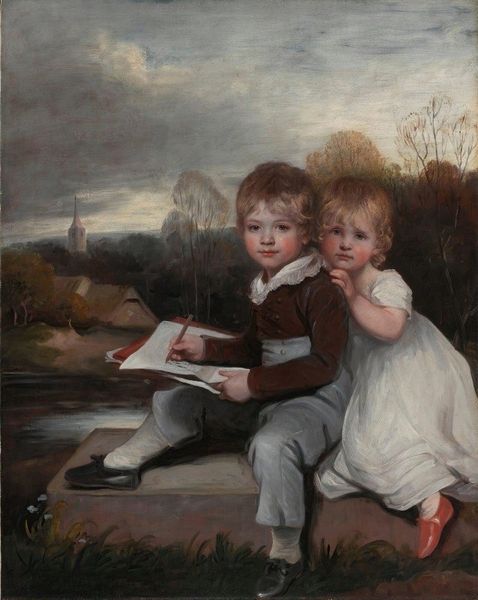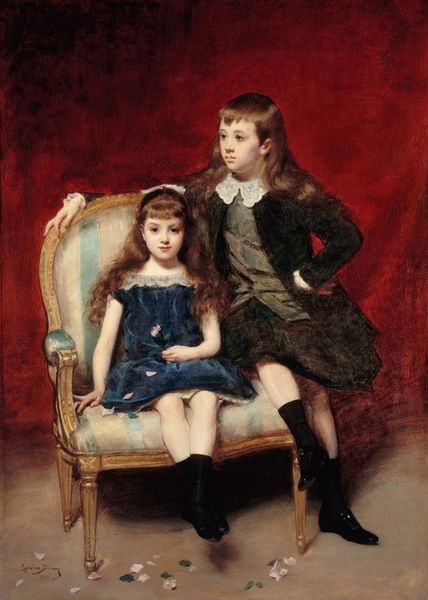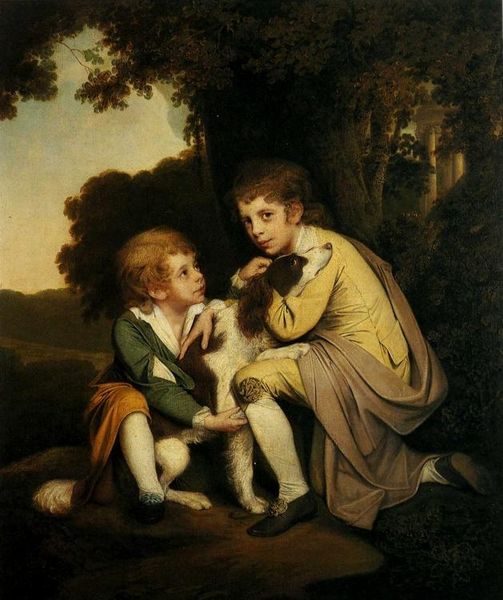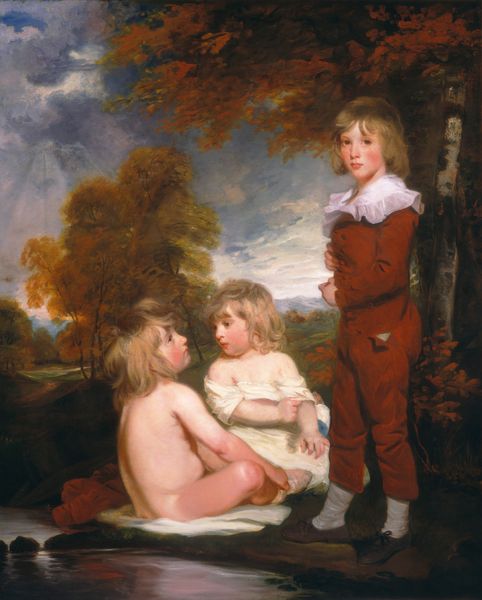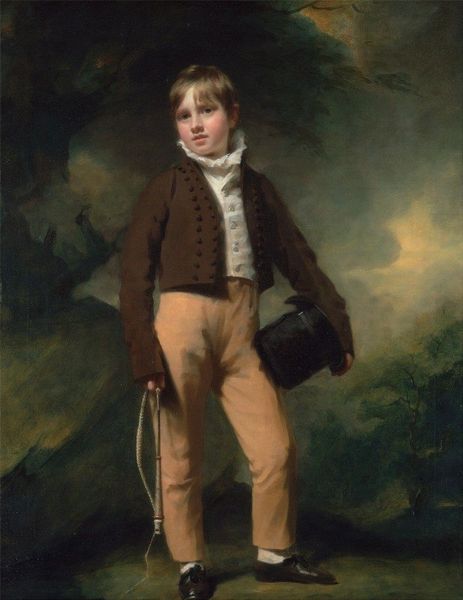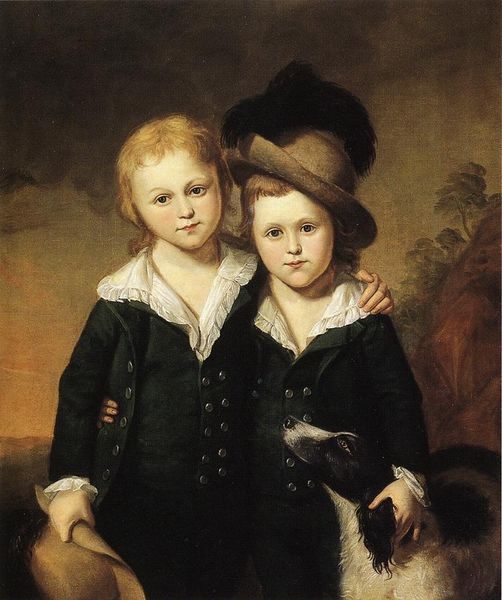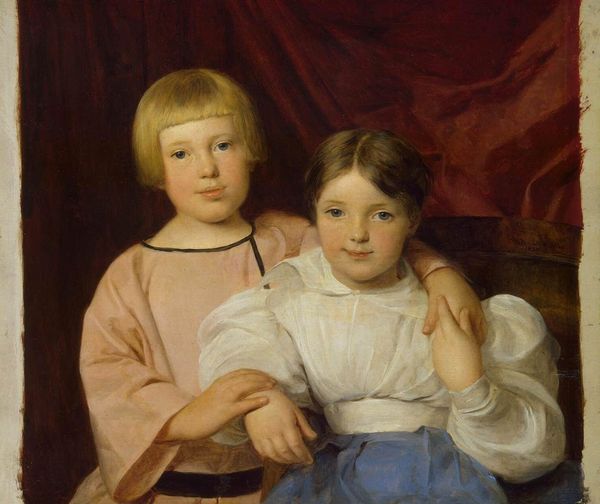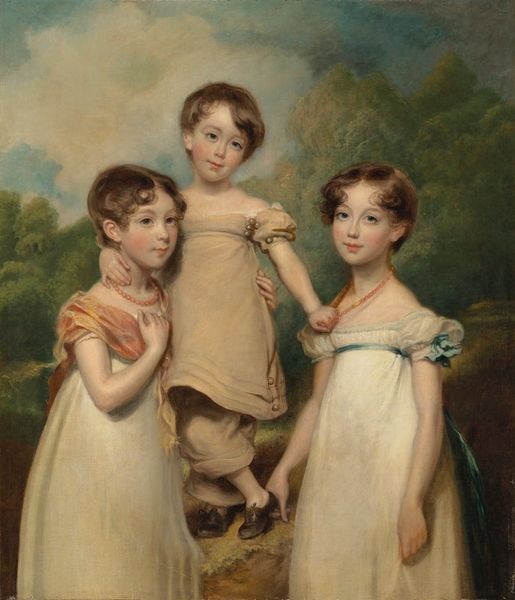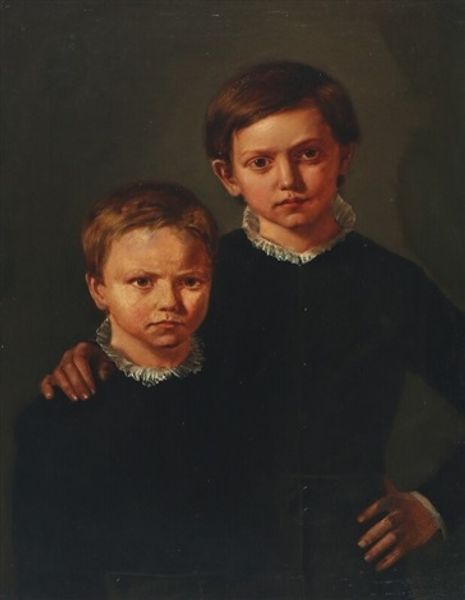
painting, oil-paint
#
portrait
#
figurative
#
painting
#
oil-paint
#
figuration
#
group-portraits
#
romanticism
#
history-painting
#
academic-art
Copyright: Public Domain: Artvee
Curator: Looking at this, the prevailing mood is one of quiet observation, don’t you think? There's an inherent stillness despite the informal positioning of the children. Editor: Indeed. And the somewhat muted color palette only amplifies that mood of thoughtful repose. What are we seeing exactly? Curator: Here we have "The Binning Children," dating back to circa 1811. It’s an oil painting attributed to the skilled hand of Henry Raeburn. Notice the interplay of academic and romantic styles. Editor: Immediately, what grabs my attention is how Raeburn employs tonal modelling here. See how he models those deep maroons and tans to construct space? And then juxtaposes the children's pale ruffled collars against that earthier backdrop to generate pictorial tension. Curator: Beyond the formal composition, Raeburn appears to capture the ethos of the time. He alludes to the enduring archetype of innocence juxtaposed against the weight and seriousness of adulthood. We’re invited to consider what futures these children will inherit. Editor: Certainly. Observe too how the costumes almost militarize the boys—the implied symmetry with those brass buttons emphasizes repetition and order, concepts essential to art theory. But then these elements are deliberately subverted. The angle of the boy on the right disrupts the grid; Raeburn carefully balances and subverts in this image. Curator: Absolutely! And it speaks to how cultural narratives get inscribed on bodies through clothing, even at a young age. Note how this era was deeply invested in solidifying class distinctions. Clothing operates as more than simple aesthetics—it carries profound cultural and symbolic value. Editor: I see what you mean. But stepping back, for me, the piece really sings because of how Raeburn balances order and chaos, and repetition and subversion so elegantly. Curator: Right! It’s that very tension between structure and feeling which renders "The Binning Children" such an enduring window into an era and the psychological makeup of its people. Editor: Agreed. And it speaks to the strength of art to reveal systems of construction that we might otherwise accept unthinkingly.
Comments
No comments
Be the first to comment and join the conversation on the ultimate creative platform.
